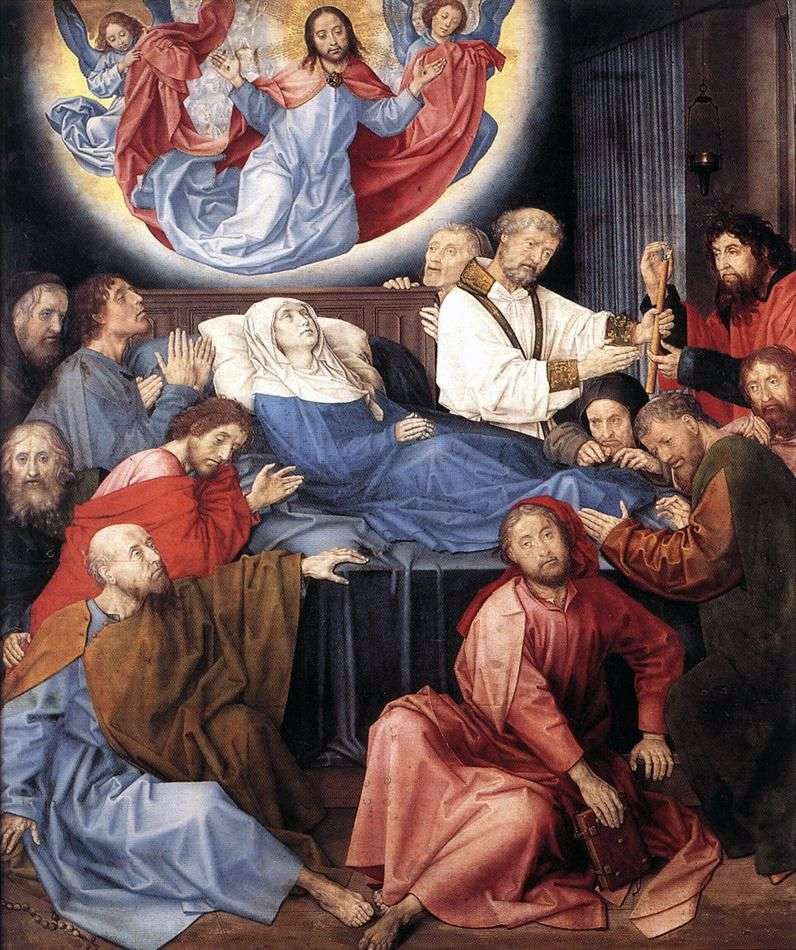
The death of Mary is one of the five or six surviving masterpieces of Hugo van der Huss. Even if we take into account the smaller non-preserved altars, which we know from copies or documents, the creative legacy of the master is about a dozen works. This can be explained by the untimely death of the artist, connected with his mental disorder. The monk of the Red Monastery near Brussels Gaspar Ofhjuz wrote in the monastery chronicle that he happened to be a novice along with the artist, and a few years later van der Gus took the tonsure: “… five or six years after if my memory serves me.” During his trip abroad, apparently to Cologne, van der Gus fell into a deep depression, and only by force managed to prevent him from committing suicide in a fit of insanity.
Probably, his death came soon after this event. Shortly before this trip in 1481, he received a gift of wine for determining the cost of the unfinished work of Dirk Bauts Scenes of Justice. In addition, Offhuse reports that during the period of Van der Huss’s novitiate, prominent persons whose portraits he wrote visited, and that, contrary to the displeasure of many, he was allowed to lead an extravagant lifestyle, despite the imminent adoption of monasticism. These details are given here not so much for their historical value, but for the fact that many attempts have been made to tie them to the Death of Mary.
Any stylistic feature distinguishing a work from other works, including a spectacular illusory atmosphere, was attributed to the psychic state of van der Hus. Nevertheless, there are formal and typological signs that, despite the emotional interpretation of the Death of Mary, are forced to date the work of the period of stay of van der Hus in the Red Monastery. The influence of this picture is also very early seen in the work of the German engraver and artist Martin Schongauer, but this will be discussed below. The theme is based on the apocryphal Gospels and is described in detail in the Golden Legend.
At the time of Mary’s death, the apostles from all over the world miraculously came to be near her. In the late medieval tradition, van der Gus depicted the moment of death in the contemporary liturgical context. Performing the role of a priest, Saint Peter takes the candle from the dying man and places it between the folded hands of Mary. Death must come in one of the following moments. Except for the bent on the left of John’s bed, it is difficult to determine the other apostles.
In the light around the bed, Christ appears, accompanied by angels. He stretches out his hands to meet the soul of Mary. If this image is not innovative, its plastic and psychological fulfillment is highly personal. The group of apostles crowding around the bed is full of movement. Not only their faces and gestures are different, but each of them expresses his despair only in his own way. Thus, the viewer has the opportunity to identify himself with one of them, whose empathy is more like his own. Such a soulful performance regarding the prosaic event is unique.
The concept of space is approaching the abstract. A small number of objects are scattered around the room: an extinguished oil lamp, a yellow wax candle, a rosary on the wooden floor, a round bead of another beads between the apex’s thumb and forefinger in the black hood on the right, a closed book. Despite the depiction of the deathbed in an oblique perspective, the depth of the picture does not seem to be greater than that of the bas-relief; plans are superimposed on each other, as in the icon.
Illumination diffused, muted colors suggest a stained glass window with a strangely flaming blue. Christ shows his wounds; he appears as the Savior. The winner of death, to which a dying woman lays all her hopes. The human, emotional interpretation of the topic with an emphasis primarily on the personal experience of each of the apostles is based on the religious practice of “new piety” – on the personal perception of the supernatural and empathy of the viewer. But, of course, one should not view this picture only as an appendix to a new theory. The origin of the work and the time of its creation in relation to other works of Van der Hus is one of the most difficult riddles in the study of old masters due to the high individuality of the artist’s work, whose roots are not easily determined. There are several other varieties of van der Hus style with a side view of the bed, which they tried to derive from the first or second etude. Definitely can only be asserted that Martin Schongauer’s famous engraving on the same plot was based on the picture of van der Huss.
Otherwise, it is impossible to explain some obvious elements that are not found anywhere else – for example, the head of the extreme left of the apostle, whose view is directed beyond the picture. Similarly, the not particularly elegant image of the two parts of the curtain on the right has not yet been considered as evidence of borrowing. In the picture near the wooden bed is a low headboard, to which Maria’s pillow is leaning; canopy absent. The curtain is not related to the bed: it fences the narrow space to the right, through which the apostles entered the room. However, the picture was shortened to the right and bottom, so that the right half of the curtain is barely visible. In the Cathedral of Christ the Savior in Bruges, a copy of the 16th century is preserved, on which the composition has been preserved completely. It shows how the right part of the curtain is removed by the apostles entering the room.
This shape was retained by Schongauer, although he turned the curtain into a part of the canopy before the bed. Schongauer probably saw the picture of van der Hus during his journey through the Netherlands for the purpose of studying between 1470 and 1473. In the XVIII century the painting was in the abbey of Dune in Bruges. Since the XVII century there was a Cistercian community, which fell into decay as a result of religious strife. Since the aforementioned copy was in the abbey of Dune, it is logical to assume that van der Gus wrote the Death of Mary at the request of this monastery. The choice of the plot of the picture could be due to its purpose for the chapel dedicated to the Virgin Mary over the crypt of the abbots of the abbots of the monastery. Such smooth lines, as in this picture, do not occur in such later works as van der Hus, as, for example, the Altar of Portinari: they are more strict and angular. Forms still do not look elongated, the anatomy is not outlined too sharply. Despite the general mood of depression, the types and contours of the heads and hands of the apostles demonstrate a limited change of mood. Most figures breathe the same nobility as the characters of the Monforte or Christmas Altar from the Berlin State Museums. Hands and feet are elegant and almost identical.
The work refers to that stylistic period when van der Hus departed from Van Eyck’s example and adopted the harmonious typology of van der Weyden in his own interpretation. The broken folds of flowing clothes acquired a more gothic character. On the other hand, the unique expressiveness of the hands is very individual. Randomly curly locks, free use of white for highlighting the skin or giving shine to the eyes, eyebrows with naturally protruding hairs, awe of the candle flame are all innovative elements that developed to the full only in baroque style after two centuries.
 Death of Mary by Michelangelo Merisi and Caravaggio
Death of Mary by Michelangelo Merisi and Caravaggio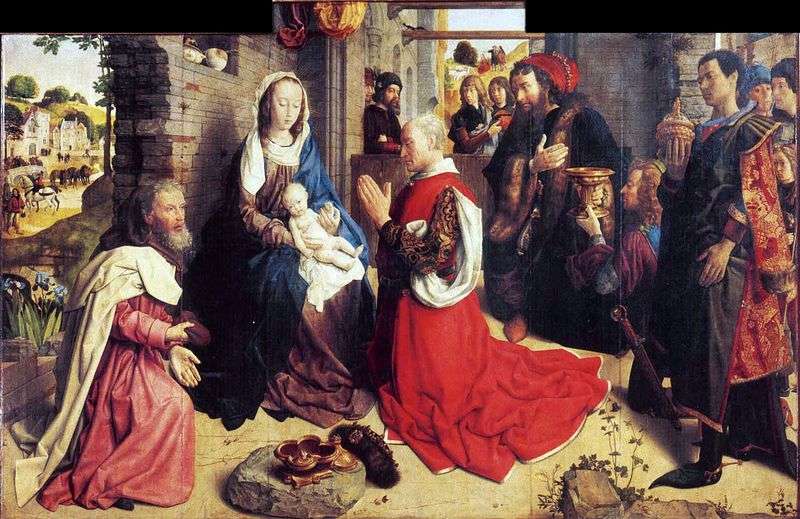 Adoration of the Magi (Altar of Monforte) by Hugo Gus
Adoration of the Magi (Altar of Monforte) by Hugo Gus Death and Life by Gustav Klimt
Death and Life by Gustav Klimt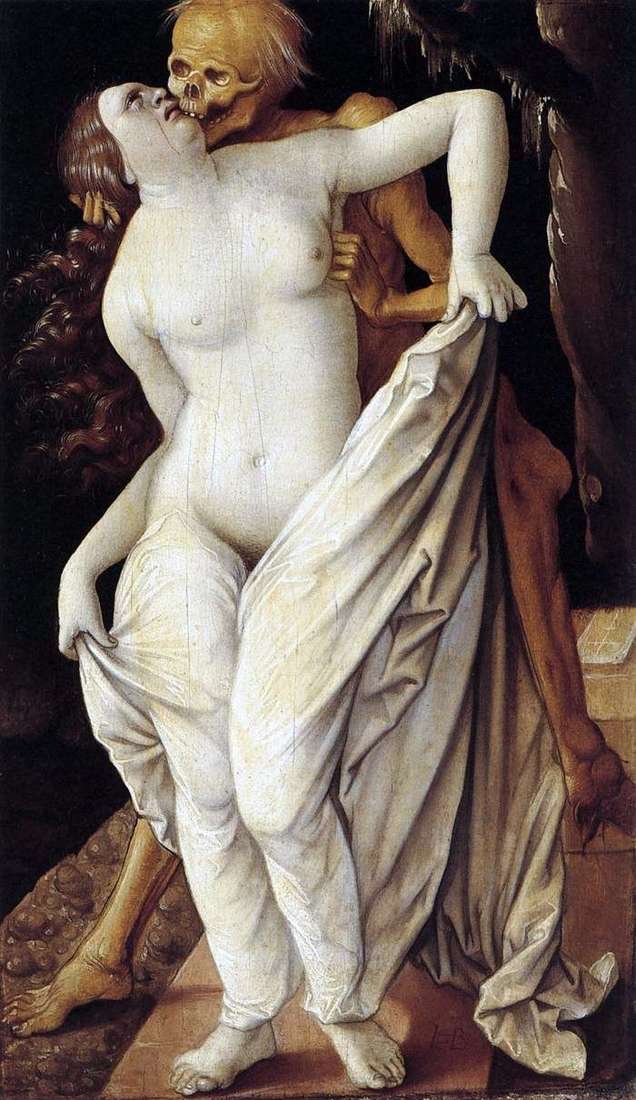 Girl and Death by Hans Baldung
Girl and Death by Hans Baldung The death of Socrates by Jacques Louis David
The death of Socrates by Jacques Louis David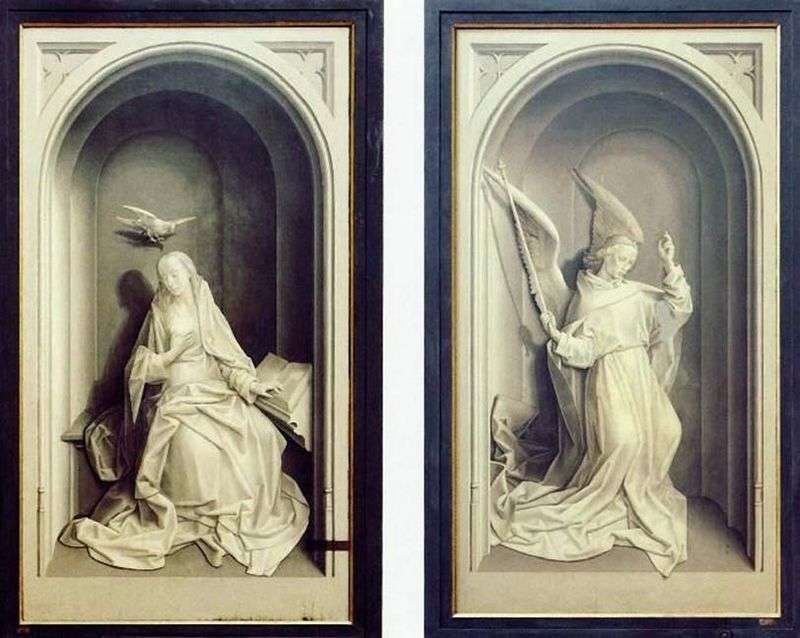 Christmas (Altar of Portinari). In the closed state by Hugo Gus
Christmas (Altar of Portinari). In the closed state by Hugo Gus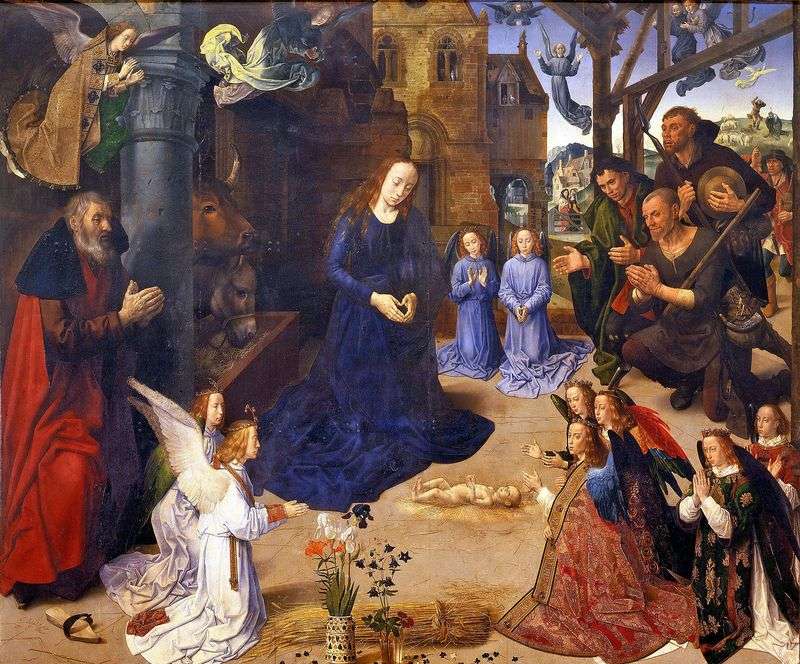 The Adoration of the Shepherds (Altar of Portinari) by Hugo van der Gus
The Adoration of the Shepherds (Altar of Portinari) by Hugo van der Gus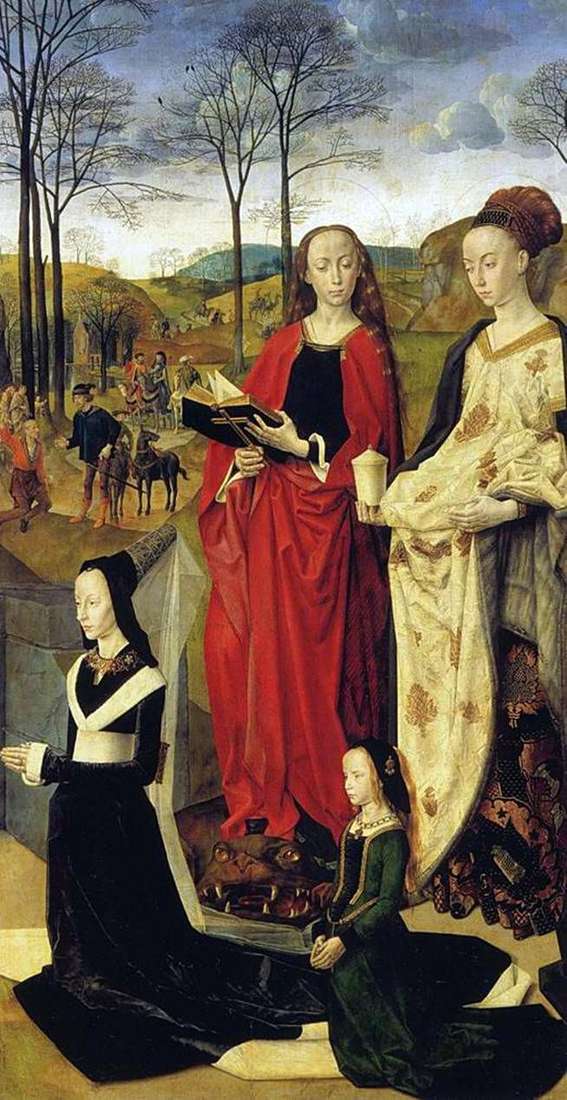 Christmas (Altar of Portinari). Right wing by Hugo Gus
Christmas (Altar of Portinari). Right wing by Hugo Gus